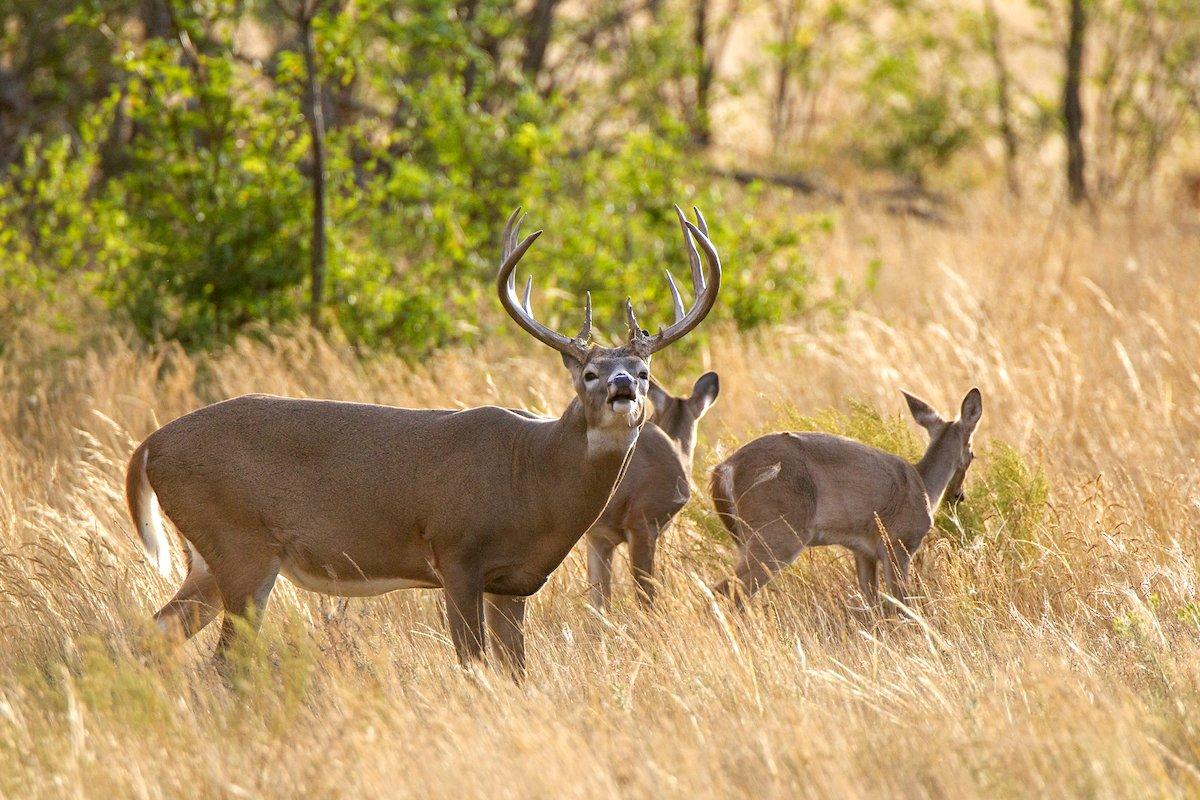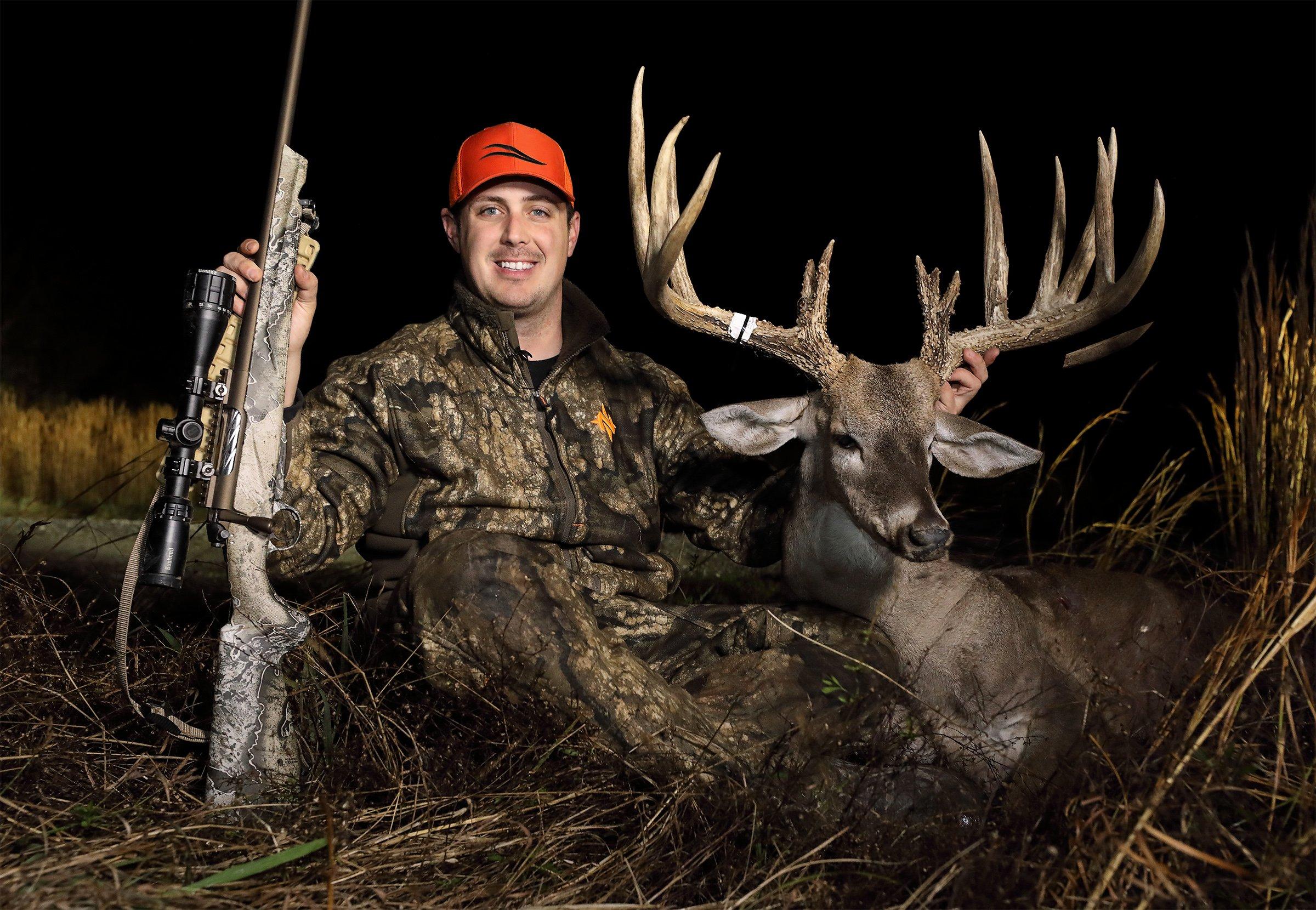In areas of Louisiana, Alabama, and Mississippi, it's game on, with bucks chasing does through the last week of January and into February
As you read this, I'm down in central Louisiana hunting the tail end of the rut. While the breeding season in these woods peaked a few weeks ago around Christmas, many bucks are still actively seeking does. Hopefully I'll whack a bayou giant before I pack up and drive 10 hours east to southeast Alabama, where the rut won't really get to rocking until last week of January and into February. Chasing that funky Southern rut, man, I love it!
Why the Weird Rut?
In central and northern states, the whitetail rut is generally confined to several weeks in November. Not so down in Mississippi, Louisiana, and Alabama where, depending on which geographical region of the state you hunt, peak deer breeding may occur in early November … or mid-December … or mid-to-late January … or even the first week of February. In some pockets of extreme southwestern Mississippi, peak rut is late September. What gives?
Many scientists point to the whitetail restocking projects of the mid-1900s, when truckloads of does and bucks were transported from many states and even Mexico to repopulate areas in the Deep South where deer were few and far between or nonexistent. Those deer from Wisconsin and other northern states had a much earlier breeding season than deer from, say, South Texas or Coahuila, Mexico. Generations of herds from those transplanted deer have stuck loosely to their different breeding dates.
In Alabama, you can look at the distribution map of where deer were stocked in the 1940s, '50s and '60s, and you can see the different genetics of those deer that came from the different parts of the country and even different parts of the state, says Chuck Sykes, Alabama Wildlife and Freshwater Fisheries director. You can see the differences in the rut.
(Don't Miss: Willie Robertson Shoots Giant Arkansas Swamp Buck)
Sykes says that depending on which region of the state you're hunting, deer might rut the first week of November or in December or in late January and into February. But the predominant rut is from the last two weeks of January through the first two weeks of February.
Good. On my Southern road trip, I won't make it over to my destination in the eastern end of the Black Belt until Feb. 1, and that is by design. The last few times I've hunted Alabama it's been mid-January. On those occasions, the deer movement was marginal at best, and I thought I was a week or two early. This season I have decided to give early February a try.
Here's another thing about hunting Southern deer. While states farther north and especially in the Midwest typically have a defined and noticeable rutting period of 10 days to three weeks, it's almost always a trickle rut in Mississippi, Louisiana, and Alabama. Wherever you hunt, expect to experience spotty periods of rutting and chasing lasting four to six weeks or more, and in between, lots of days with slow deer movement.
(Don't Miss: 20 Winter Deer Hunting Tips for the Last Week of Season)
One reason for this is the often warm winter weather. It may be 80 degrees during a stretch in January, and mature bucks aren't comfortable chasing hard in the day. They rut and chase a lot at night, though you won't see it.
Also, on many Southern lands, the age structure and buck-to-doe ratio of the herds is out of whack, which leads to an extended breeding season with many peaks and valleys of buck movement. As far as having a strong, condensed rut like you might see in Iowa or Wisconsin, you're not going to see it in Mississippi or Alabama.
Hunt Doe Bedding Areas
Tactics-wise, Sykes, who is not only a wildlife manager but also a hardcore hunter, says, Right now in January, I'm hunting where the does are. I'm going to be in a treestand or box blind close to a thicket or cutover where does are bedding. A lot of these bucks don't want to get up during daylight hours, especially when it's hot or if there's hunting pressure in the area. If I'm close to a spot where the does hang out and bed, I've got a better chance of seeing a buck stick his head out for a few minutes early or late in the day.
Try a Decoy
In many areas of the South, you'll hunt in and around food plots or green fields. Often these fields fill up with five to 10 or more does an hour before sunset. But not always. As I said, there are lots of slow days when you hunt the trickle rut.
Over the years, a decoy, set as either a doe or a buck with midsize antlers, has worked better for me in Southern green fields than any other place I've tried the technique.
During one of the downtimes in Louisiana last January, I was seeing only three or four deer in food plots each evening, and none in the mornings. No whiff of a mature buck anywhere. The fourth morning I needed to make something happen, so I went to the trouble of hauling in and staking out a full-size decoy upwind of my box blind. I even tied on a white rag for a tail and soaked it with estrous scent.
Sunup came and went, no deer. I was about to doze off when I looked up and saw a thick-bodied 8-point sidling in toward the fake doe, circling around her with a gleam in his eye. The 60-yard shot with my .30-06 was ridiculously easy.
Bust to boom — it's like that when you hunt the Southern rut. Over the years, a decoy, set as either a doe or a buck with midsize antlers, has worked better for me in Southern green fields than any other place I've tried the technique.
Wednesday on Public Land
Scientists from Mississippi State tracked GPS-collared bucks and found that in January you can often see good rutting action on a typical state wildlife area or national forest where does far outnumber bucks.
The biologists said that on raw land where the buck-to-doe ratio is out of balance, there aren't enough bucks to breed the adult does during a late November or December estrous cycle. A month to six weeks later, as the rut trickles on, the missed does cycle randomly back into heat, often drawing bucks out of the woodwork.
If you grind it out on public ground and are in the right place at the right time in January, you might well spot a hot doe with a buck (or bucks) on her heels. If you can, hunt Tuesday through Thursday, when there's less pressure on public dirt.
Shoot a Doe, Then Your Buck?
Did you know that a dead doe in front of your stand can be a great attraction to mature bucks? This might be contrary to popular belief, but there's science behind it.
When hunting in the South, especially in food plots, I often harvest a big doe, with either bow or firearm, then remain in the stand as long as possible, says Grant Woods, one of America's foremost deer biologists.
(Year in Review: 10 Monster Bucks of 2021)
The noise of a gunshot might be a disturbance, but Grant says that when deer are rutting, even that is no big deal. The overpowering smell of an adult doe, especially when she is in a pre-receptive or receptive stage, can be a magnet for bucks. I've personally harvested several good bucks while they were sniffing the doe I had shot earlier in that hunt. Hope this trick helps everybody out.









